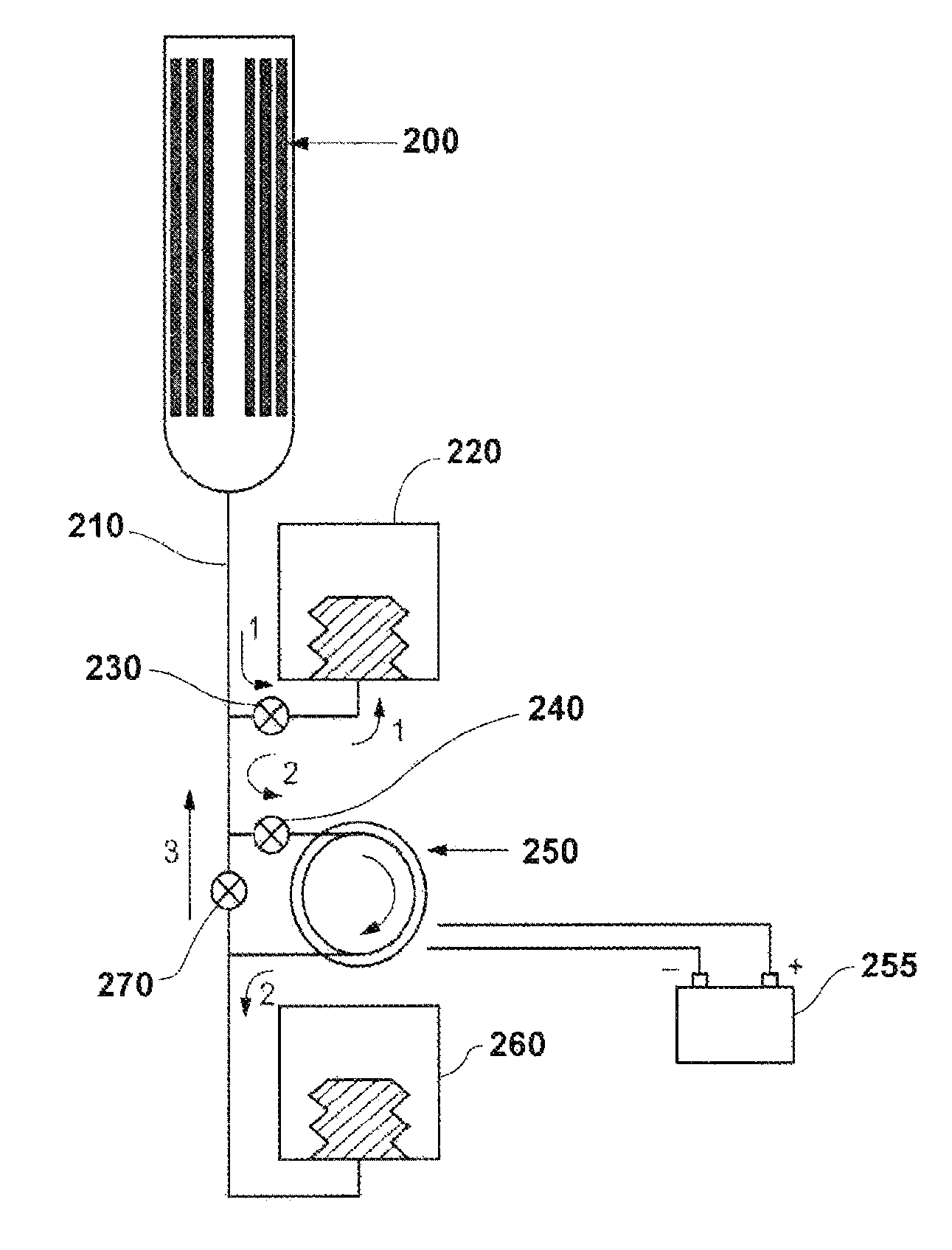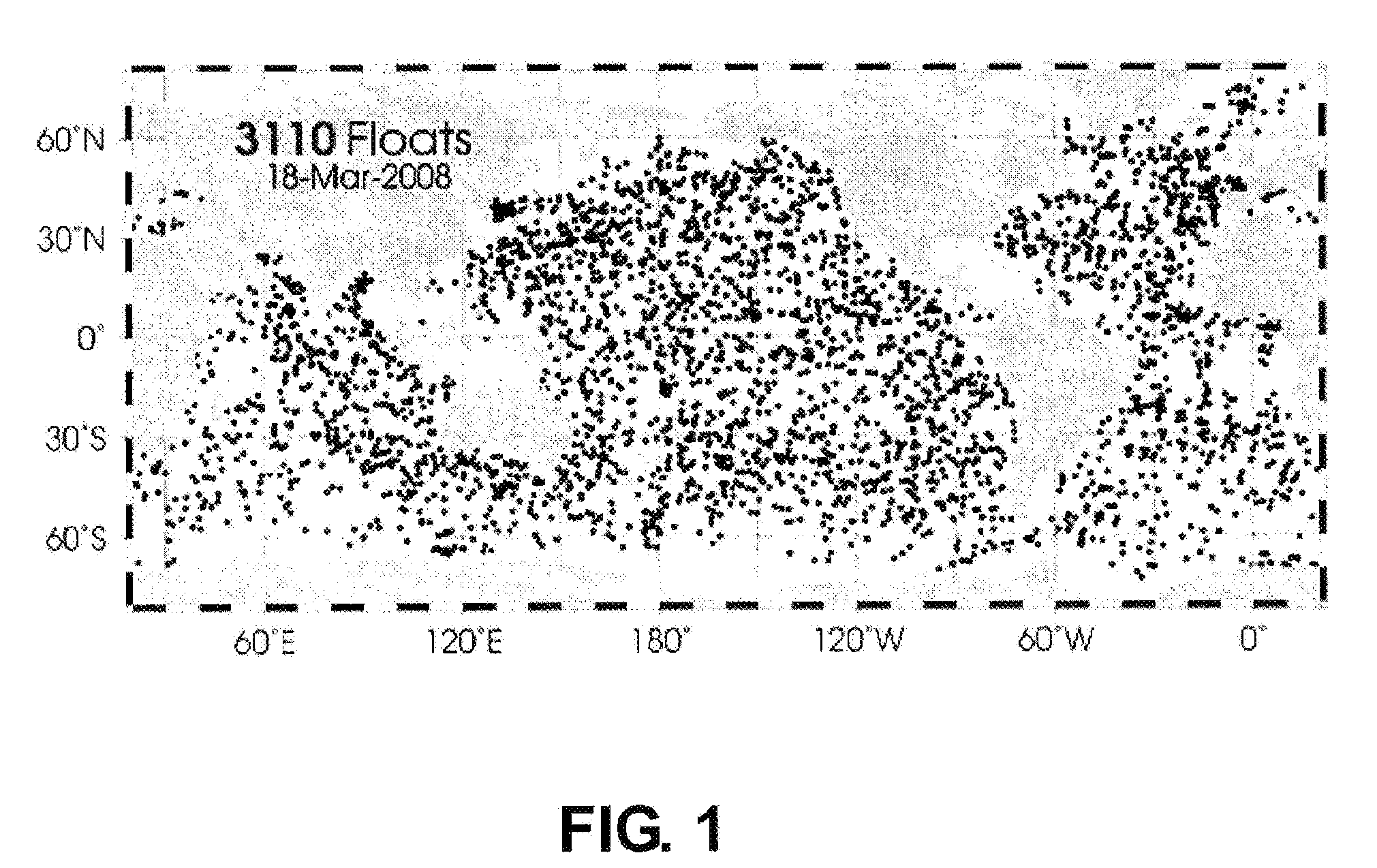Phase change material thermal power generator
a technology of phase change material and thermal power generator, which is applied in the field of power generators, can solve the problems of inefficient, complicated and expensive fabrication, and the device of fig. 3 is too heavy, and the cost of fabrication is both complicated and expensiv
- Summary
- Abstract
- Description
- Claims
- Application Information
AI Technical Summary
Problems solved by technology
Method used
Image
Examples
Embodiment Construction
In accordance with the present disclosure, a simplified system is provided with the use of a hydraulic motor to replace the piston and a generator to produce electricity.
As shown in FIG. 4, the PCM (200) melting causes the hydraulic fluid (210) to be stored in a gas spring bellows (220) (e.g., at a pressure of 3000 psia) when the fluid is flowed past valve (230), see path 1. When power is desired, valve (240) is opened and the fluid passes through a hydraulic motor (250) (path 2), thus eliminating all the pistons and gears of FIG. 3 above, and allowing a more simple, efficient and lightweight operation and charging of battery (255).
The battery (255) can be used to power scientific measuring equipment, communications, imaging, etc. It can also be used for electrically-powered buoyancy control and for directional control equipment.
Applicants have noted that a commercially available hydraulic motor can replace the complicated components represented by (20), (70), (80), and (90) in FIG....
PUM
 Login to View More
Login to View More Abstract
Description
Claims
Application Information
 Login to View More
Login to View More - R&D
- Intellectual Property
- Life Sciences
- Materials
- Tech Scout
- Unparalleled Data Quality
- Higher Quality Content
- 60% Fewer Hallucinations
Browse by: Latest US Patents, China's latest patents, Technical Efficacy Thesaurus, Application Domain, Technology Topic, Popular Technical Reports.
© 2025 PatSnap. All rights reserved.Legal|Privacy policy|Modern Slavery Act Transparency Statement|Sitemap|About US| Contact US: help@patsnap.com



